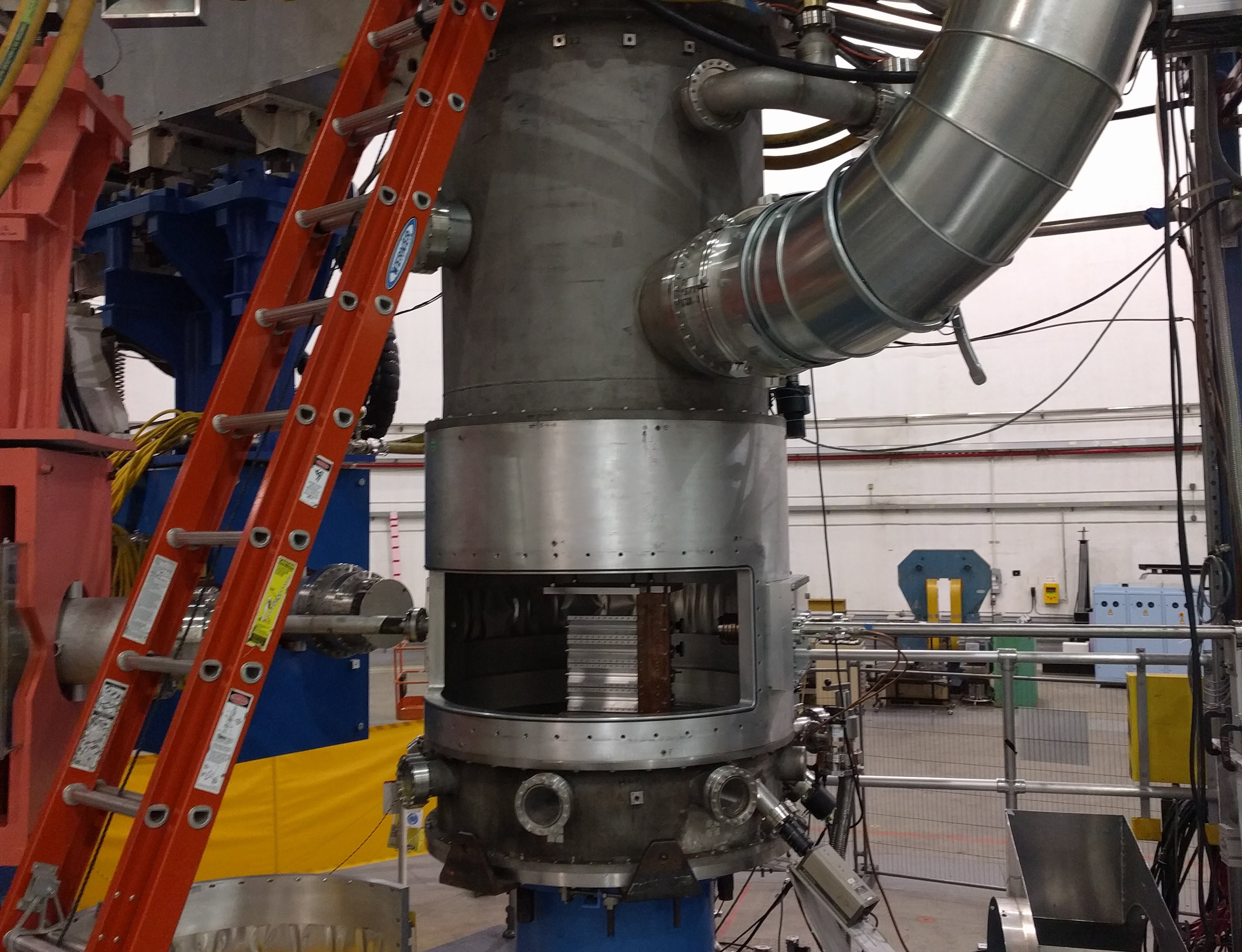Containment hut and target cells installed within the containment hut connected to the experiment.
The Savannah River Site (SRS) is well-known for its tritium expertise and capabilities in support of our national defense. It is these same unique competencies that can also play a role in supporting other initiatives, such as a series of nuclear physics experiments at the Thomas Jefferson National Accelerator Facility (Jefferson Lab)
Jefferson Lab, a U.S. Department of Energy (DOE) Office of Science national laboratory, is home to one of the most powerful microscopes in the world, the Continuous Electronic Beam Accelerator Facility (CEBAF), a DOE User Facility. More than 1,600 researchers worldwide use this unique accelerator facility to study the subatomic particles that make up our universe, helping to build a comprehensive understanding of an atom’s nucleus.
Researchers at Jefferson Lab were interested in conducting five experiments that used the accelerator’s beam to study the nuclei of tritium, a rare isotope of hydrogen. They wanted to compare it to a more common isotope of helium called helium-3. Tritium and helium-3 are so-called mirror nuclei, because the distributions of their building blocks, protons and neutrons, are mirror images of each other.
“Tritium has two neutrons and one proton, and helium has two protons and one neutron. So, the nuclear effects inside these nuclei should be similar,” explains Hanjie Liu, a graduate student at Columbia University who worked on the experiments.
Through this comparison, the nuclear physicists hope they can learn about the structure of the nucleus, its protons and neutrons, and their building blocks, quarks.
“You need tritium for all five of these experiments, because the five experiments measure the nuclei at different distance scales,” said Liu. “One experiment detects the quarks inside the nucleons at a very small scale, while the others try to understand the protons’ and neutrons’ interactions and nuclear distributions at a relative large scale."
To safely acquire and properly contain the tritium, the nuclear physicists and engineers at Jefferson Lab turned to the experts at Savannah River Tritium Enterprise (SRTE) for help. SRTE is the collective term for the facilities, people, expertise and activities at SRS related to tritium.
“SRS has safely handled tritium for nearly 70 years, so when Jefferson Lab spoke to us about the experiments they had planned, we were glad to lend our support,” said SRTE Engineering Manager Mike Collins.
In the summer of 2016, SRTE engineering personnel went to Jefferson Lab to collaborate on the design for a ventilation system and reusable tritium hut, which was fabricated at SRS, to ensure tritium would not contaminate the experimental area in the event of a mishap. SRTE returned in the summer of 2017 to test the system, which showed that the designs worked as intended.
SRTE HVAC Design Authority Greg Howard commented, “This assignment was a challenge because their facilities were not designed to work with tritium; however, we worked together as a team to modify their existing infrastructure to create an HVAC system and containment hut that would not only provide them a safe environment for this tritium experiment but also a system that could be reused for future missions at Jefferson Lab.”
Jefferson Lab nuclear physicists and engineers designed a target cell for the tritium, and the design was reviewed by Savannah River National Laboratory (SRNL). This cell featured three layers of containment at all times that were designed to safely encapsulate the substance before, during and after experiments in which the tritium inside would be bombarded by CEBAF’s beam of electrons. SRNL’s studies focused on the potential for tritium embrittlement or cracking in 7075-T6 aluminum, the primary confinement vessel designed for the experiments.
SRNL Project Lead Greg Staack commented, “Application of our extensive tritium materials compatibility testing and tritium handling experience to meet Jefferson Lab’s experimental needs represented a perfect collaboration between national laboratories.”
Once preparations for the experiment were complete, SRTE filled, packaged and delivered the tritium target cell to Jefferson Lab for the experiments, which began in December 2017. Once the experiments were complete, the tritium cell was returned to SRTE for unloading and proper disposal.
Jefferson Lab personnel are very appreciative of the SRTE and SRNL support that made this research possible. In his note of thanks, Jefferson Lab Staff Scientist David Meekins said, “there are 13 Ph.D. students who have big smiles today.”
The significance of the experiments captured the attention of national news and was featured in a Fox News article about research to explain what goes on inside an atom.
Collins said, “This was a great opportunity for SRS to share our tritium expertise with the scientific community, and in supporting these experiments, SRS had a role in studying the makeup of our universe.”
*Published in coordination with The Savannah River Site and SRNS Today magazine: https://savannahrivernuclearsolutions.com/pubs/srns_news.htm


